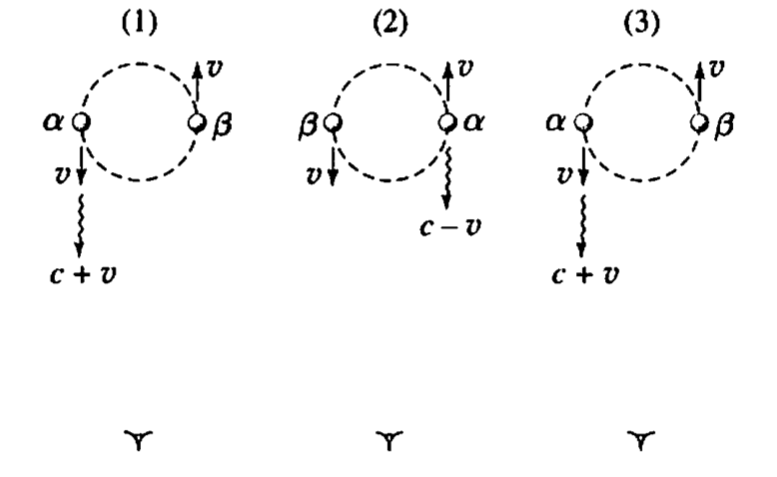αφ τιμή C+0 BQ τιμή υ δα C-0 αφ τιμή C+0 (3) β
As seen in the image provided, a double-star system with stars of equal mass rotate in circular orbits around their mutual center of mass that is halfway between them. One of the stars (α) is bright. The other star (β) is its unseen dark companion. Our line of sight passes through the orbital plane such that once in every period, α approaches head-on, and once ever period it recedes directly away. The same is true for β. Suppose light always moves at speed c relative to the source that emits it (i.e., if v is the orbital speed of each star, light travels toward us at speed c + v from α when it is headed toward us, and at speed c - v when it is headed away from us, as depicted).
The double-star system is a distance d away from Earth. How long would take light to get to Earth from α if the light is emitted when α is (i) coming toward us, and (ii) moving away from us?

Step by step
Solved in 2 steps with 2 images
